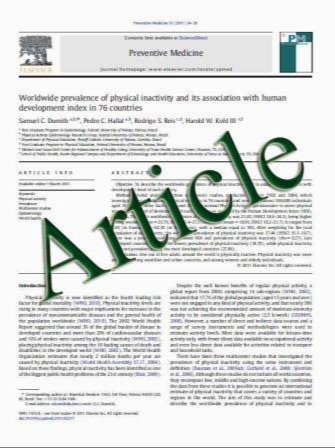A prospective study to assess the predictive value for hereditary spherocytosis using five laboratory tests (cryohemolysis test, eosin-5پŒ-maleimide flow cytometry, osmotic fragility test, autohemolysis test, and SDS-PAGE) on 50 hereditary spherocytosis fa
- نوع فایل : کتاب
- زبان : انگلیسی
- مؤلف : Renée L. Crisp & Liliana Solari & Daiana Vota & Eliana Garcیa & Gabriela Miguez & Maria E. Chamorro & Gabriel A. Schvartzman & Graciela Alfonso & Dan
- چاپ و سال / کشور: 2010
Description
This prospective study was carried out to assess the usefulness of five laboratory tests in the diagnosis of hereditary spherocytosis (HS), based on the correlation of erythrocyte membrane protein defects with clinical and laboratory features, and also to determine the membrane protein deficiencies detected in Argentina. Of 116 patients and their family members tested, 62 of them were diagnosed to have HS. The specificity of cryohemolysis (CH) test was 95.2%, and its cut-off value to distinguish HS from normal was 2.8%. For flow cytometry, cut-off points of 17% for mean channel fluorescence (MCF) decrease and 14% coefficient of variation (CV) increase showed 95.9% and 92.2% specificity, respectively. Both tests showed the highest percentages of positive results for diagnosis. Either CH or flow cytometry was positive in 93.5% of patients. In eight patients, flow cytometry was positive only through CV increase. Protein defects were detected in 72.3% of patients; ankyrin and spectrin were the most frequently found deficiencies. The CV of the fluorescence showed significantly higher increases in moderate and severe anemia than in mild anemia (p=0.003). Severity of anemia showed no other correlation with tests results, type of deficient protein, inheritance pattern, or neonatal jaundice. CH and flow cytometry are easy methods with the highest diagnostic accuracy. Simultaneous reading of mean channel fluorescence (MCF) decrease and CV increase improve diagnostic usefulness of flow cytometry. This test seems to be a reliable predictor of severity. The type of detected protein deficiency has no predictive value for outcome. Predominant ankyrin and spectrin deficiencies agree with reports from other Latin American countries.
Ann Hematol (2011) 90:625–634 DOI 10.1007/s00277-010-1112-0 Received: 8 July 2010 / Accepted: 21 October 2010 / Published online: 16 November 2010


